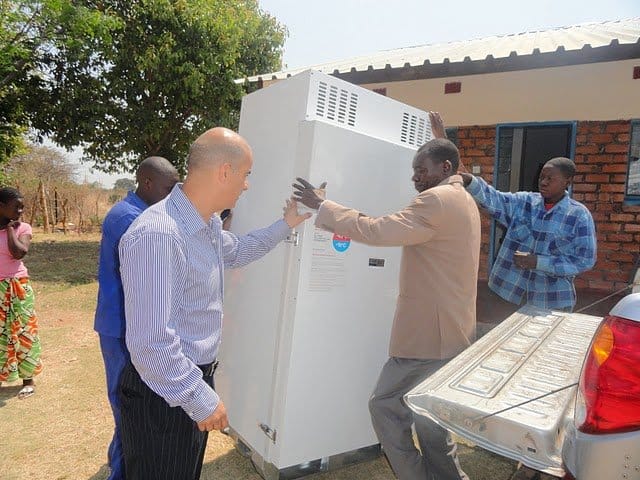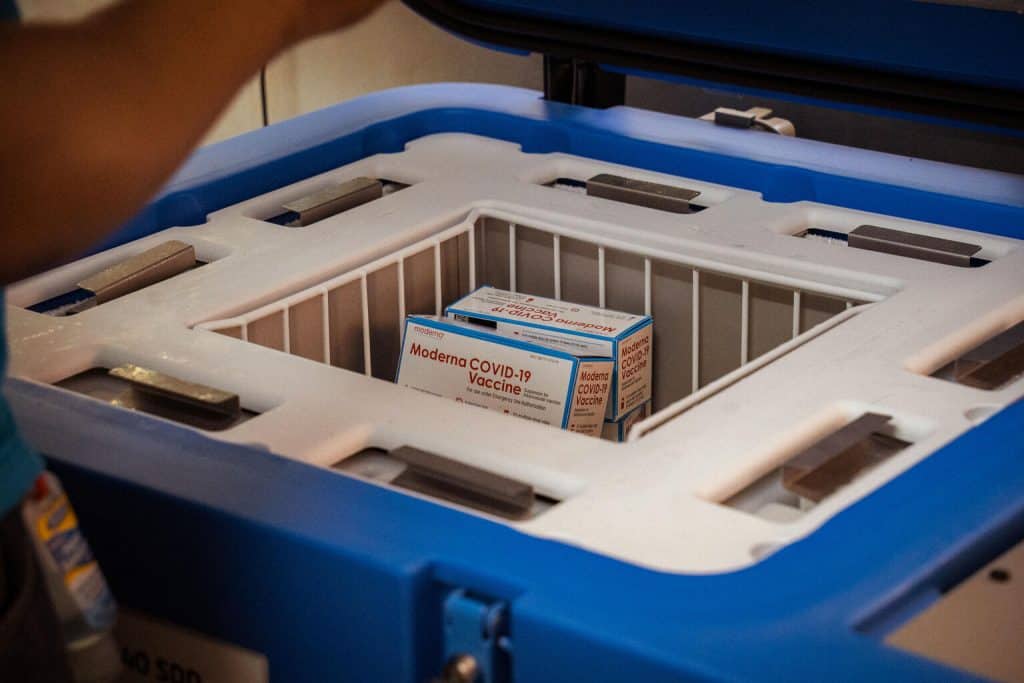It was through years of installing battery-powered refrigerators in far-flung parts of the world — from Nigeria to India to Vietnam — that Ian Tansley came to realize their massive flaws.
“It came to a head for me in the early 2000s,” says Tansley, now based in the rural Welsh town of Machynlleth. “The conventional thinking for many years was that the fridge should be run from a battery. But over time it became very clear to me that the battery was causing all the problems.”
For those living in remote areas, when a fridge stops working the problem can be difficult to diagnose. Has the battery failed, or the fridge itself? Some of the fridges Tansley installed had poor temperature control, meaning food or precious vaccines could freeze or spoil. Gas and kerosene-powered devices risked catching fire. And even if well-looked after, the fridges would only last for a few years, and repairs were expensive.
So Tansley started developing an alternative — one that would be much more reliable in the testing conditions of the tropics.

The idea struck him on a walk near his home in Snowdonia National Park, where he saw a frozen lake and thought about how the ice floated on the surface while fish swam below. Later, in his garden shed, Tansley reflected on this as he noodled with different concepts.“The challenge was to make something that can stand up to the conditions in these remote areas,” he says.
The result of his research, funded with $100,000 from The Bill and Melinda Gates Foundation, was the SureChill fridge, a solar-powered device that in some models can last for up to two weeks without electricity, even in sweltering external temperatures up to 43C. During the day solar power is used to freeze a stock of water inside the refrigerator, which then maintains the cool, steady interior temperature overnight.
Today, SureChill is one of the world’s largest producers of these fridges, known as “solar direct drives” (SDD). The concept has been adopted widely — there are around 20 models using similar technology that are on the World Health Organization’s list of devices approved for use in the vaccine cold chain. They are now being deployed in over 50 countries.
Tansley’s research all those years ago helped spawn a new generation of solar fridges that is revolutionizing the fight against Covid-19 and other treatable diseases around the world. The Pfizer vaccine must be stored at approximately minus-100 degrees Fahrenheit — a huge challenge for countries in Sub-Saharan Africa, South America and beyond, where heat and humidity are abundant but, particularly in remote regions, electricity often isn’t. UNICEF and GAVI, the vaccine alliance, have as a result been pushing to deploy these fridges as the solution.
According to Thomas Sorensen of the Cold Chain Unit in UNICEF’s Supply Division, the organization has helped install some 40,000 SDD units. While costing roughly $2,000 each — double the price of a standard fridge — they will last for a decade before needing to be replaced.

“These fridges are very, very important,” says Sorensen. “Their emergence is really a significant achievement that is being made [for global healthcare]. The other critical thing is that it’s being rolled out at scale. With the scalability, it has generated capacity for new vaccines coming in, especially bulky ones like lung and diarrhea vaccines.”
But while solar fridges have provided a powerful shot in the arm for distribution, Toby Peters, a professor specializing in cooling systems for food and medicine at Britain’s University of Birmingham, throws cold water on any assumption that the issues surrounding vaccine supply have been entirely solved.
Weighed down by negative news?
Our smart, bright, weekly newsletter is the uplift you’ve been looking for.“These fridges deliver sustainable, resilient cooling using renewables,” he says. “It’s very environmentally friendly and sustainable. However, a fridge, while important, is only one part of the supply chain.”
Peters says efforts must also address issues such as “last mile” provision — the logistical challenges in delivering medicine to the final destination — citing research from 2019 that found 25 percent of vaccines lose their efficacy through cold chains breaking. “It’s really important the whole chain works in an integrated way,” he adds.
But progress, according to GAVI, has already begun on that front. Some fridges now come with “integrated energy harvesting capabilities,” which allow extra solar power to be available for a variety of uses at health facilities, including charging cell phones, laptops, radios and lanterns, a spokesperson said in an emailed statement.
Another issue on the horizon is that while many medicines, including the Oxford AstraZeneca COVID vaccine, only need to be maintained between 2 and 8C, the Pfizer vaccine must be kept down to -70C (-94F). That is possible, according to Peters, but not all fridges have that capacity yet.
“You can theoretically take ice down to that temperature, but you need the refrigeration cycle to work at that temperature,” he says. “It’s a really important area of research, particularly in the developing world.”









